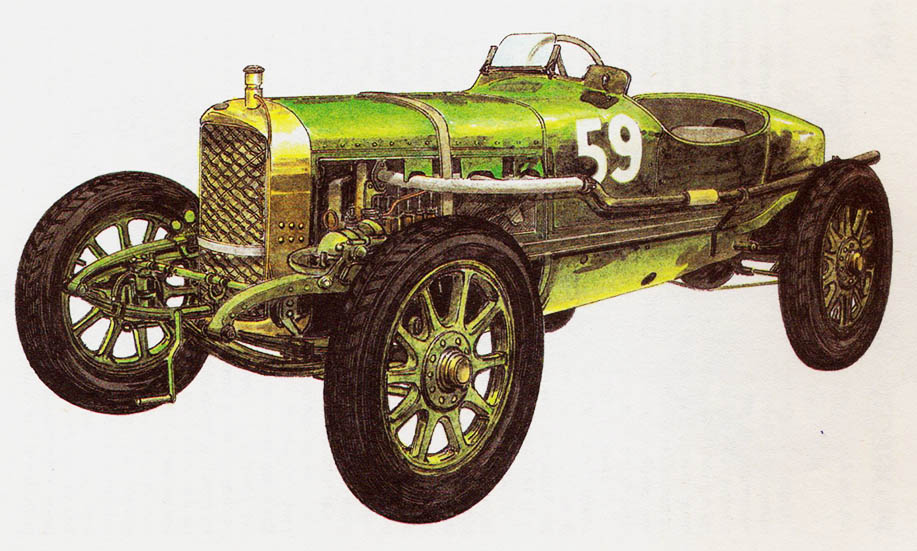SUNBEAM – year 1912
Sunbeam Motor Car Co., Ltd, Wolverhampton, Staffs, United Kingdom.
After a three-year break 25 i 26 June 1912 of the year, the ACF Grand Prix races were held again in Dieppe, and in the same year 9 September also hosted the French Grand Prix at Le Mans. In the ACF Grand Prix competition, the so-called. free formula, which limited only the total width of the cars to 1750 mm. For the first time, Peugeot has participated in the races, successful in both cases. She also repeated it the following year. The winning Peugeot from both years is described in the presentation of the competition of the year 1913.

Sunbeam Motor Car Co., Ltd, Wolverhampton, Staffs, United Kingdom.
The English Sunbeam cars became the sensation of the Grand Prix competition, perfected and tested on the famous Brooklands racetrack. They were constructed by the Frenchman Louis Coatalen, naturalized in England, employed at Sunbeam as the main constructor, manager and player simultaneously. The three submitted Sunbeams were equipped with four-cylinder displacement engines 2996 cm3, thus also complying with the rules of the 'Coupe de l'Auto”, held simultaneously with the Grand Prix and allowing cars with a capacity below 3 liters. Engines with cylinder bore 80 mm and long stroke 148,7 mm reached power 53 kW (72 KM) by 2800 RPM. An SV valve train was used. An aerodynamic body, tapered at the rear, was attached to the steel frame. Rigid bridges are suspended on semi-elliptical leaf springs. The brakes only acted on the rear wheels. The car reached its maximum speed 136 km/h.
Sunbeam cars driven by Rigel, Resta and Medingera finished third in the overall race, fourth and fifth places and at the same time the first three places in the "Coupe de l'Auto”, with Rigel winning the cup.
Grand Prixz race 1912 The year was interesting for several reasons. For the last time, cars with a rear axle chain drive appeared there, for the first time, vehicles with four-valve engines and valve timing took part 2 x OHC. The quick-change Rudge-Whitworth wheels with metal spokes also contributed to Peugeot's victory, which were then an innovation.